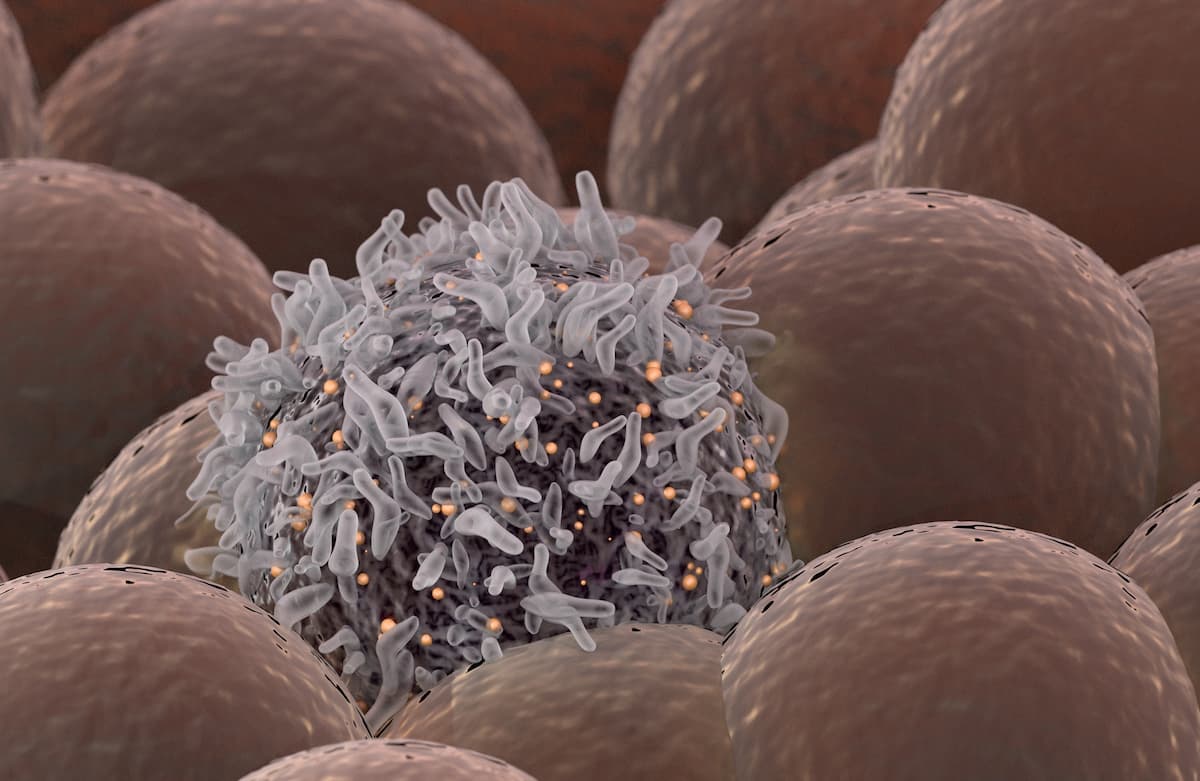Nivolumab/Relatlimab Shows Sustained Efficacy in Advanced Melanoma
Data from RELATIVITY-047 show consistent benefits with nivolumab/relatlimab across most patient subgroups, including those with BRAF-mutated disease.
"Overall, these descriptive analyses continued to show a benefit for nivolumab plus relatlimab in patients with previously untreated metastatic or unresectable advanced melanoma," according to the study authors.

Combining nivolumab (Opdivo) with relatlimab (Opdualag) yielded sustained, statistically significant improvements in progression-free survival (PFS) and other efficacy outcomes vs nivolumab alone in patients with previously untreated metastatic or unresectable advanced melanoma, according to data from the phase 2/3 RELATIVITY-047 study (NCT03470922) published in The Journal of Clinical Oncology.1
Nivolumab/relatlimab produced a median PFS of 10.2 months (95% CI, 6.5-15.4) vs 4.6 months (95% CI, 3.5-6.5) in patients who received nivolumab monotherapy (HR, 0.79; 95% CI, 0.66-0.95). The PFS rates at 3 years were 31.8% (95% CI, 26.6%-37.1%) vs 26.9% (95% CI, 22.1%-31.9%) in each respective arm.
Data showed a median overall survival (OS) of 51.0 months (95% CI, 34.0-not reached [NR]) in the nivolumab/relatlimab arm and 34.1 months (95% CI, 25.2-44.7) in the nivolumab monotherapy arm (HR, 0.80; 95% CI, 0.66-0.99). The 3-year OS rates in each arm were 54.6% (95% CI, 49.2%-59.6%) vs 48.0% (95% CI, 42.7%-53.1%). Additionally, the objective response rate (ORR) was 43.7% (95% CI, 38.4%-49.0%) vs 33.7% (95% CI, 28.8%-38.9%), respectively.
Outcomes in clinically relevant patient subgroups typically favored the nivolumab/relatlimab arm. PD-L1 expression in tumors did not appear to predict efficacy at any PD-L1 cutoff in the experimental and comparator arms. According to the study authors, combining nivolumab with relatlimab conferred improved efficacy among patients with BRAF-mutated and BRAF wild-type disease.
“Although targeting 2 immune checkpoints in patients with advanced melanoma is a well-established treatment strategy, to our knowledge, RELATIVITY-047 is the first study to test and show a statistically significant improvement in PFS for an immunotherapy combination vs PD-1 monotherapy,” Hussein A. Tawbi, MD, PhD, a professor, deputy chair, and director of Personalized Cancer Therapy in the Department of Melanoma Medical Oncology of the Division of Cancer Medicine at The University of Texas MD Anderson Cancer Center, wrote in the study with coauthors.1 “Overall, these descriptive analyses continued to show a benefit for nivolumab plus relatlimab in patients with previously untreated metastatic or unresectable advanced melanoma.”
In the RELATIVITY-047 study, patients were randomly assigned 1:1 to receive nivolumab at 480 mg plus relatlimab at 160 mg (n = 355) or 480 mg of nivolumab alone (n = 359) once every 4 weeks.
The trial’s primary end point was PFS per blinded independent central review (BICR). Secondary end points included OS and ORR based on BICR. Exploratory end points included melanoma-specific survival (MSS), PFS2, and efficacy with subsequent therapy in the second-line setting.
Patients 12 years and older with histologically confirmed stage III or IV melanoma, no prior systemic therapy for unresectable or metastatic melanoma, and tumor tissue from an unresectable or metastatic disease site were eligible for enrollment on the trial.2 Those with active brain metastases or leptomeningeal metastases, uveal melanoma, or autoimmune disease were ineligible to enroll.
Data showed that the median MSS was NR (95% CI, NR-NR) in the nivolumab/relatlimab arm vs 46.7 months (95% CI, 34.1-NR) in the nivolumab monotherapy arm (HR, 0.75; 95% CI, 0.60-0.94). The median PFS2 was 29.6 months (95% CI, 23.0-42.1) vs 20.3 months (95% CI, 16.1-24.9) in each respective arm (HR, 0.79; 95% CI, 0.65-0.96).
Any-grade treatment-related adverse effects (TRAEs) affected 85.1% and 73.3% of patients in the nivolumab/relatlimab and nivolumab monotherapy arms, respectively. The most common TRAEs in each arm included pruritus (26.2% vs 17.0%), fatigue (23.7% vs 13.1%), rash (17.2% vs 15.0%), diarrhea (16.9% vs 10.9%), and hypothyroidism (16.6% vs 13.1%). Grade 3/4 TRAEs occurred in 22.0% and 12.0% of patients in each respective arm.
Treatment-related deaths were reported in 1.1% of the nivolumab/relatlimab arm and 0.6% of the nivolumab monotherapy arm. Investigators noted no new treatment-related deaths since the time of the last analysis.
References
- Tawbi HA, Hodi FS, Lipson EJ, et al. Three-year overall survival with nivolumab plus relatlimab in advanced melanoma from RELATIVITY-047. J Clin Oncol. Published online December 13, 2024. doi:10.1200/JCO.24.01124
- A study of relatlimab plus nivolumab versus nivolumab alone in participants with advanced melanoma (RELATIVITY-047). ClinicalTrials.gov. Updated September 21, 2023. Accessed February 7, 2025. https://tinyurl.com/yc25s9r6